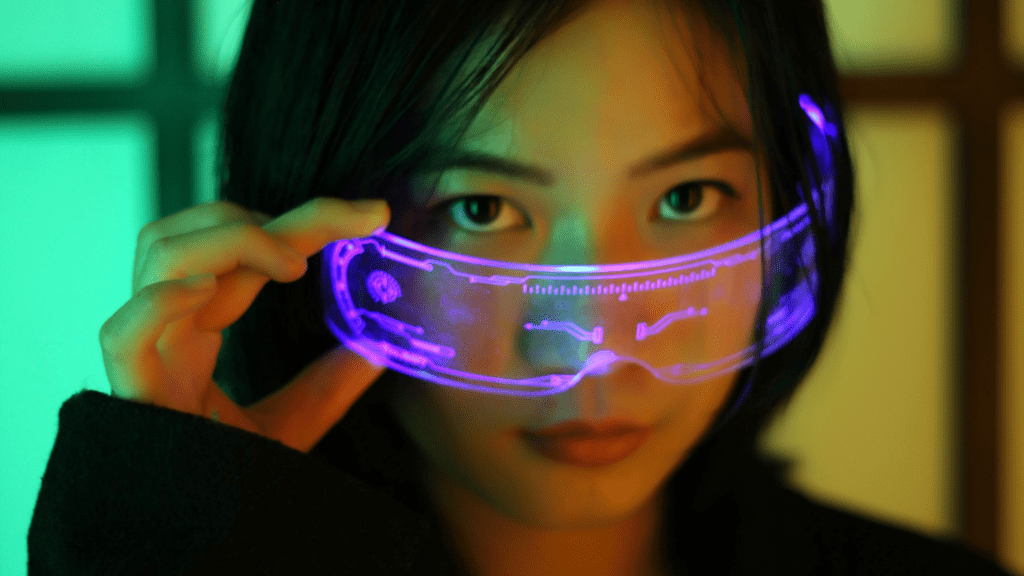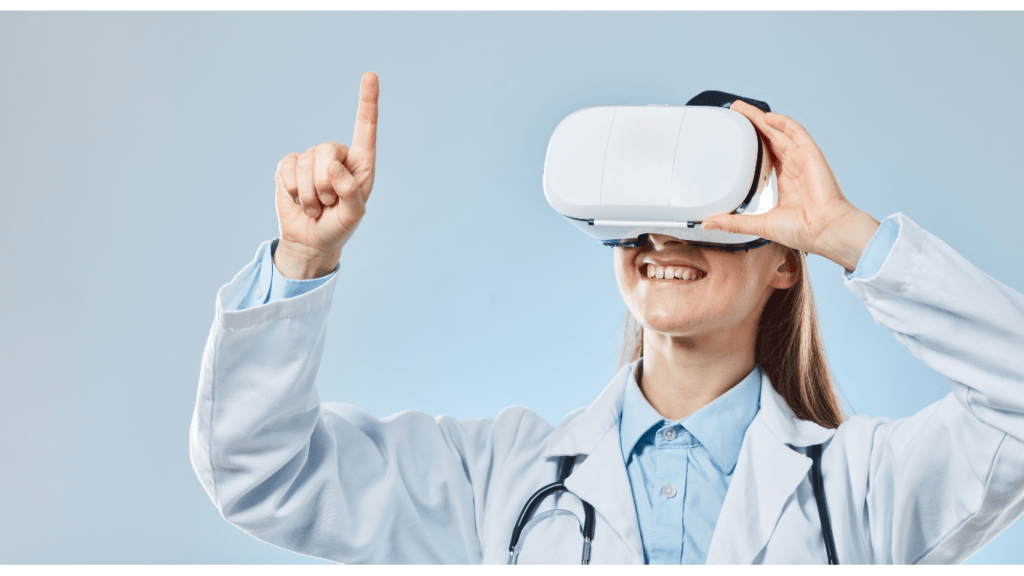Augmented Reality: Enhancing Everyday Life
Augmented reality (AR) integrates seamlessly into many aspects of our daily lives, transforming ordinary experiences into extraordinary ones.
This technology overlays digital information onto our physical surroundings, providing a blend of reality and virtual elements.
1. Gaming
AR revolutionizes gaming by creating immersive experiences.
Games like Pokémon GO let players hunt virtual creatures in real-world locations. By merging physical and digital worlds, AR adds excitement and depth to gameplay.
2. Shopping
AR improves shopping by allowing virtual try-ons and enhanced product visualization.
Retailers use AR apps to let customers see how furniture fits in their homes or how clothes look on them, providing a personalized shopping experience without leaving their homes.
3. Education
AR transforms education by making learning more interactive and engaging. Apps like Google Expeditions take students on virtual field trips to historical landmarks, deep oceans, or even outer space.
By bringing subjects to life, AR fosters better understanding and retention.
4. Navigation
AR enhances navigation by providing real-time directions and contextual information.
Apps like Google Maps use AR to overlay arrows and street names on the user’s view, making it easier to navigate busy streets or unfamiliar areas.
Social Media
AR enriches social media by adding layers of creativity and interaction.
Platforms like:
- Snapchat
offer AR filters that users can apply to their photos and videos, enabling more expressive and engaging content.
By integrating AR into various facets of life, we can make everyday interactions more intuitive and engaging.
This technology not only bridges the gap between the real and virtual worlds but also enhances our daily routines, making them richer and more enjoyable.
The Evolution of Augmented Reality
From Science Fiction to Daily Utility
AR’s journey began as a concept in sci-fi literature and films, with early imaginings such as holographic interfaces and digital overlays. Initially, few believed these technologies would become part of daily life.
However, breakthroughs in computing power, sensor technology, and software development transformed AR from fiction to reality.
Today, AR devices like smartphones and AR glasses enhance various tasks, merging digital interactions with the physical world seamlessly.
Major Milestones in AR Development
Several key moments marked AR’s transition from concept to practical application:
- 1968: Ivan Sutherland created the first head-mounted display system, named “The Sword of Damocles,” laying the groundwork for future AR devices.
- 1992: Louis Rosenberg developed the first functioning AR system, “Virtual Fixtures,” for the U.S. Air Force, demonstrating practical AR applications.
- 2000: Hirokazu Kato released ARToolKit, an open-source software library simplifying AR application development, propelling AR innovation.
- 2009: AR became mainstream as smartphones with cameras and sensors enabled consumer AR apps, like Layar, which provided digital information over real-world images.
- 2016: The success of Pokémon GO demonstrated AR’s commercial potential, engaging millions worldwide by blending digital creatures with real environments.
- 2020: AR glasses started gaining traction in industries like healthcare and manufacturing, providing hands-free access to information and instructions.
These milestones highlight AR’s rapid evolution and its increasing presence in everyday life.
Applications of Augmented Reality

Education and Learning
AR transforms education by overlaying digital information in real-world settings. Interactive 3D models in subjects like anatomy and astronomy help students visualize complex concepts.
Apps like Google Expeditions allow virtual field trips, enhancing learning without physical travel.
In technical training, AR-enabled simulators provide hands-on practice, reducing the time spent on theoretical studies.
Retail and Shopping
Retail benefits from AR through virtual try-ons and enhanced product displays.
Shoppers see how furniture fits in their home using apps like IKEA Place, which uses AR to overlay furniture.
Clothing retailers offer virtual fitting rooms, ensuring customers find the right size and style before purchasing. These innovations reduce return rates, improving the shopping experience.
Healthcare Innovations
AR revolutionizes healthcare by providing real-time data to practitioners.
Surgeons use AR systems to overlay critical information during procedures.
Apps like AccuVein assist clinicians by visualizing veins, making it easier to insert IVs.
Medical students benefit from AR by practicing procedures on virtual patients, enhancing their skills without risk to real patients.
Challenges and Limitations
Privacy and Security Concerns
Augmented Reality (AR) integrates digital displays with the physical world, raising privacy and security concerns.
Users’ personal data often get collected through AR applications (e.g., location, preferences), which increases the risk of data breaches.
Applications, games, and services that leverage AR might require constant access to cameras and sensors, which can lead to unauthorized data access.
Additionally, AR devices like glasses can inadvertently capture sensitive information from surroundings, making it essential to have secure data management practices.
Hardware and Connectivity Issues
AR relies heavily on robust hardware and stable connectivity.
Currently, devices like smartphones and AR glasses must have high processing power and sufficient battery life to run AR applications efficiently.
Despite advancements, many devices face limitations in areas like weight, comfort, and battery autonomy.
Connectivity issues also pose challenges; AR applications often require real-time data processing, necessitating high-speed internet connections.
Intermittent connectivity can disrupt AR experiences and reduce their effectiveness, especially in outdoor or remote areas lacking reliable network coverage.
The Future of Augmented Reality
Emerging Technologies and Trends
Rapid advancements in AR are shaping the way we interact with the world.
Novel hardware like lightweight smart glasses and contact lenses with embedded AR capabilities are becoming more prevalent.
These devices promise enhanced user experience by offering greater convenience and comfort.
Optical advancements, such as waveguide technology, streamline the integration of AR visuals with the real world, providing clearer and more immersive experiences.
Software developments also play a crucial role. AI and machine learning algorithms improve object recognition and tracking, making AR applications more intuitive and responsive.
Platforms like ARKit (iOS) and ARCore (Android) facilitate easier development, driving rapid innovation in mobile AR applications. Cloud-based AR could transform how users interact with vast databases, enabling real-time information retrieval and enhanced collaborative experiences.
Predictions for Everyday Impact
AR is set to revolutionize daily life across various domains.
In healthcare, practitioners will access real-time patient data and perform complex procedures with augmented overlays, enhancing precision and outcomes.
Educational tools employing AR will make learning more interactive and engaging, as students visualize complex concepts through 3D models and simulations.
Retail experiences will become highly personalized. Shoppers will virtually try on clothes, preview home decor, and access detailed product information in their physical space, reducing return rates and enhancing satisfaction.
The workplace will benefit from AR by enabling remote collaboration, virtual training, and real-time data visualization, significantly improving productivity.
In public spaces, AR will provide enhanced navigation, real-time translations, and interactive historical tours, making travel experiences richer and more accessible.
Entertainment, including gaming and live events, will see new levels of immersion and interactivity, blending digital content seamlessly with the real world.
Each of these developments points to a future where AR is deeply woven into the fabric of everyday life, making it more efficient, engaging, and informed.

